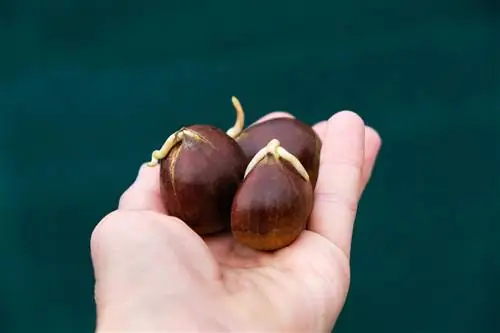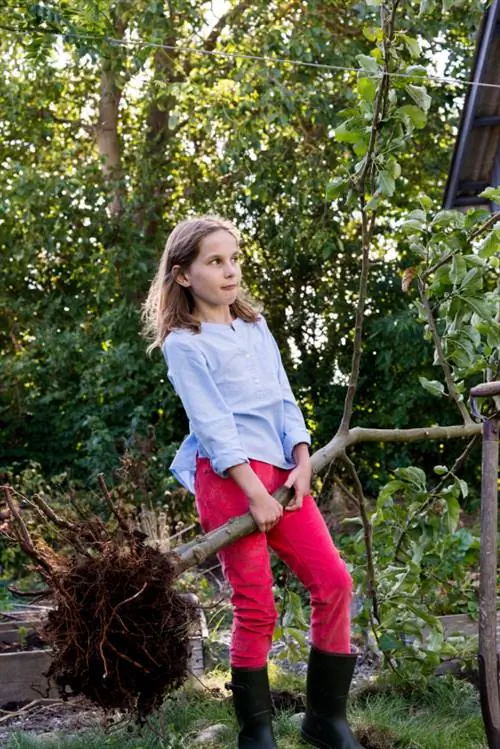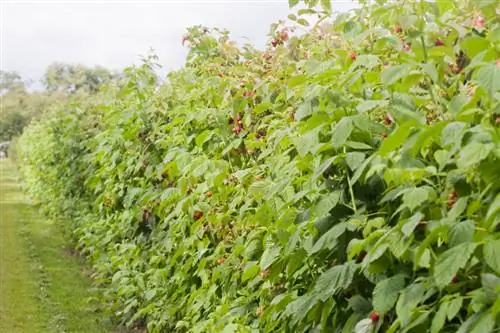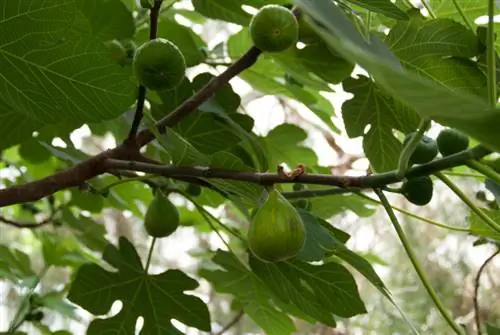- Author admin [email protected].
- Public 2023-12-16 16:46.
- Last modified 2025-01-23 11:22.
Well-developed roots can nourish and water a tree, leaving its owner to do little. But they can also, invisibly, grab onto a lot of space, displace other plants and damage paths. We would like to shed light on the root system of a chestnut below.
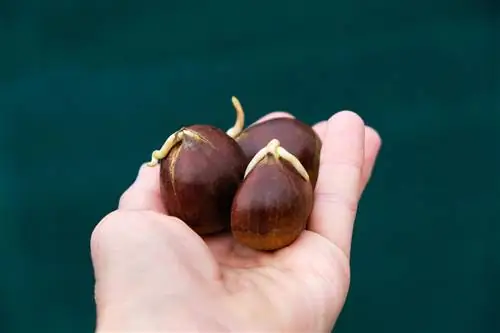
What are the roots of the chestnut?
The sweet chestnut (Castanea sativa), also known as sweet chestnut and real chestnut, is one of the trees that are referred to asdeep-rooted. Its root system has a deep, strongtaproot, from which few, but verydensely branched lateral roots emerge.
How does the root system of a chestnut develop?
The seedling formsfirst a taproot. This reaches a length of around 40 cm within a year. From the second year onwards, the lateral roots begin to sprout. There are comparatively few copies. But due to their very strong branching, it becomes an overall strong, powerful root system. Compared to other deep-rooted plants, the taproot of the chestnut does not go very deep. The lateral roots use their branches to conquer the surrounding soil both horizontally and vertically.
What affects root growth?
In fact, it is never possible to predict exactly how the root system of a particular sweet chestnut will develop after planting. The extent to which she can realize her genetic potential is determined, among other things, by these factors:
- Vitality of the chestnut
- Location
- Soil texture
- Number of transplants (schooling)
What do I have to consider when planting in the garden?
The root system of a fully grown, hardy sweet chestnut does not require any attention and makes care almost unnecessary. When planting and in the first few years thereafter, the following must be taken into account:
- Planting pit should be twice the root volume
- watering is required on dry days
- Taproot makes transplanting difficult
- Root protection necessary in winter (leaf layer)
- Possible cause of yellow leaves: root damage by mice
Tip
Maintain sufficient planting distance from buildings and paths
The roots of the sweet chestnut, especially the branches of the lateral roots, can spread just below the surface of the earth and over a fairly wide area. They develop strong enough to, for example, lift paving slabs. To be on the safe side, plant a sweet chestnut tree very far apart. It should be at least 5-6 meters, because every young tree, no matter how small, will eventually become huge.

